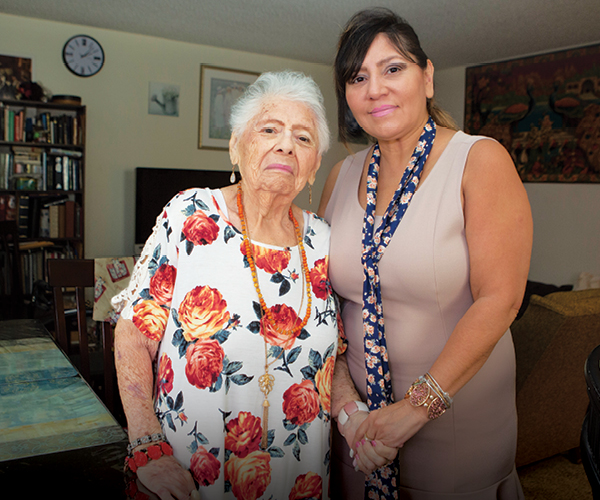
Invisible no more
Alliance seeks to understand family caregivers’ struggles, needs
Joyce Morentin cares for her mother, Beatriz, 24 hours a day as she battles Alzheimer’s disease. She’s done it for more than two years now, but a recent trip to a Bakersfield hospital for a presumed urinary tract infection tested her strength like never before.
“After five days of tests, they discharged mom with a smile and reassurance that nothing was wrong with her from a medical standpoint,” Morentin recalls. “But her symptoms never went away. The hospital team sent me home with no advice and no clue as to how to help her.”
Morentin is one of the nation’s 40 million caregivers, half of whom, according the 2019 Home Alone Revisited report, are largely self-taught and perform complex medical tasks at home. The study was done by the Home Alone Alliance,℠ of which the Betty Irene Moore School of Nursing at UC Davis is a founding member, along with AARP, United Hospital Fund and the Family Caregiver Alliance. Authors sought to understand the experience of these caregivers.
“Many of the changes in the health care system, such as earlier discharge and chronic disease self-management, carry major expectations for families to step up to more complex care and involvement. Yet, too often they are unprepared and do not get the support they need to assume these important roles,” says Heather M. Young, dean emerita and report co-author.
The tasks taken on by these family caregivers include medication management, mobility assistance, wound care and incontinence assistance. The report underscores the work led by the Family Caregiving Institute at the Betty Irene Moore School of Nursing, established to advance research, education and policy to support caregivers.
“This study illustrates the need to understand the multicultural diversity among family caregivers and the increasing complexity of the care they provide,” explains Terri Harvath, institute director. “We must improve how communities and health care teams support this growing, often-unrecognized workforce.”
For Morentin, that support cannot come soon enough.
“When I read about this study in the newspaper, I thought, ‘they’re describing my life.’ That 40 million other people are going through this makes me wonder, how many others see themselves?” Morentin recalls. “I don’t want to put mom in a home, but I need help from the health care community so I can care for her myself.”

